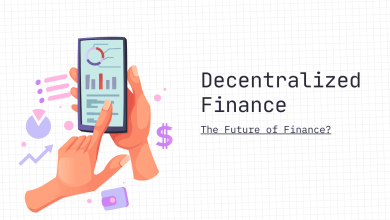Forking in Blockchain: Understanding Chain Splits and Upgrades

In the world of blockchain, the term “fork” refers to a split in the blockchain, resulting in two or more separate versions of the ledger. Forking can occur for various reasons, ranging from planned software upgrades to disagreements within the community. This article will explain what forking is, the different types of forks, and their implications for cryptocurrency users and developers.
What is a Fork?
A fork occurs when a blockchain’s protocol (the set of rules governing the network) is changed, leading to a divergence in the blockchain. Imagine a road splitting into two paths: one path follows the original rules, and the other path follows the new rules.
At the point of the fork, the blockchain splits into two (or more) branches. Each branch has its own transaction history and potentially its own cryptocurrency.
Why Do Forks Happen?
Forks can happen for several reasons:
- Software Upgrades: To introduce new features, improve performance, fix bugs, or address security vulnerabilities.
- Disagreements within the Community: If there’s a fundamental disagreement about the future direction of the blockchain, the community may split, leading to a fork.
- Accidental Forks: These can occur due to temporary network issues or bugs in the software, but they are usually resolved quickly.
Types of Forks
There are two main types of forks:
- Soft Forks:
- Description: A backward-compatible change to the blockchain protocol. This means that older nodes (nodes running the old software) will still recognize the new blocks as valid, although they may not be able to fully utilize the new features.
- Mechanism: Typically, a soft fork tightens the rules of the blockchain. For example, a soft fork could reduce the maximum block size.
- Result: The blockchain remains a single chain. There is no split into separate cryptocurrencies.
- Example: The SegWit (Segregated Witness) upgrade to Bitcoin was a soft fork.
- Hard Forks:
- Description: A non-backward-compatible change to the blockchain protocol. This means that older nodes will not recognize the new blocks as valid, leading to a permanent split in the blockchain.
- Mechanism: A hard fork introduces new rules that are incompatible with the old rules. For example, a hard fork could increase the maximum block size or change the consensus mechanism.
- Result: The blockchain splits into two (or more) separate chains, each with its own transaction history and potentially its own cryptocurrency.
- Examples:
- Bitcoin Cash (BCH): A hard fork of Bitcoin that increased the block size.
- Ethereum Classic (ETC): A hard fork of Ethereum that occurred after the DAO hack.
- Ethereum (ETH): After the DAO hack, the majority of the Ethereum community hard-forked to reverse the hack, creating the current Ethereum (ETH) chain.
Implications of Forks
- For Users:
- Soft Forks: Generally, users don’t need to take any action during a soft fork. Their existing wallets and funds will continue to work on the updated blockchain.
- Hard Forks: Hard forks can be more complex. Users may need to update their software to follow the new chain. They may also receive coins on the new chain if they held coins on the original chain before the fork (e.g., Bitcoin holders received Bitcoin Cash after the BCH hard fork). It’s crucial to understand the specifics of each hard fork and take appropriate action to protect your funds.
- For Developers:
- Soft Forks: Developers need to ensure their applications are compatible with the new rules.
- Hard Forks: Developers may need to choose which chain to support or support both chains.
- For the Cryptocurrency:
- It may create multiple versions of the initial coin, splitting the initial community.
Accidental Forks
Sometimes, forks can occur unintentionally due to network latency or software bugs. These are usually temporary and resolve themselves quickly as the network converges on a single chain. Miners typically choose to build on the longest chain (the one with the most accumulated proof-of-work or stake), resolving the fork.
Conclusion: Forks – A Mechanism for Change and Evolution
Forking is an inherent part of the blockchain ecosystem. It allows for upgrades, innovation, and the resolution of disagreements within the community. While hard forks can be disruptive, they also demonstrate the decentralized nature of blockchain, where no single entity controls the protocol. Understanding the different types of forks and their implications is essential for anyone participating in the cryptocurrency space. It is crucial to do research before and after a fork to protect assets.








How does a hard fork differ from a soft fork in terms of user impact and network consensus?
A hard fork fundamentally differs from a soft fork in its backward compatibility and impact on the blockchain. A hard fork is a non-backward-compatible update, meaning old network nodes cannot validate new blocks, often necessitating a mandatory upgrade for users and potentially leading to a permanent chain split if there isn’t near-universal consensus. Conversely, a soft fork is backward-compatible, allowing old nodes to still recognize new blocks (though not fully understand new rules), making upgrades optional for basic participation, generally avoiding a chain split, and requiring only a majority consensus among network participants.